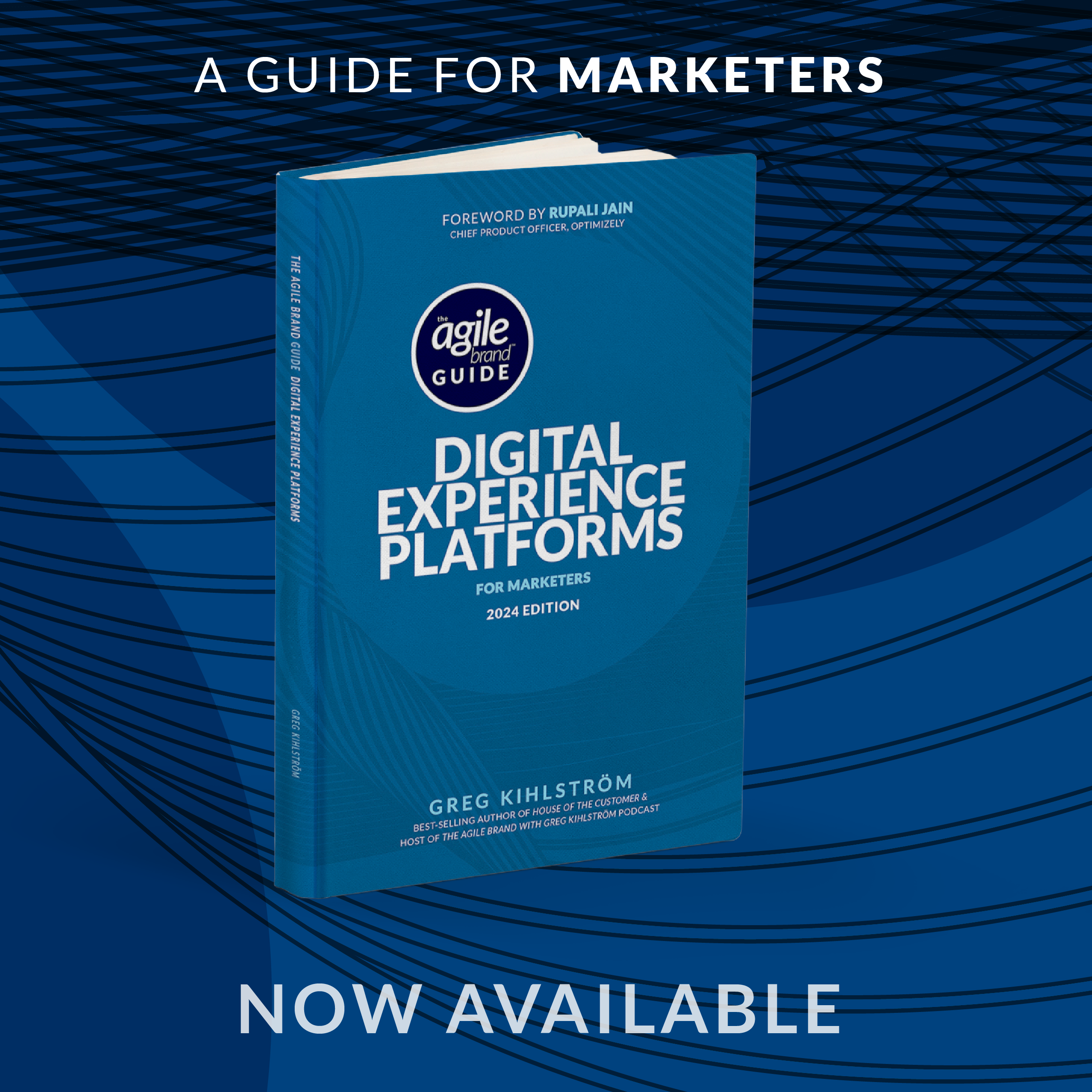This article was based on the interview with Tara DeZao, Senior Product Marketing Director at Pega by Greg Kihlström, Marketing and AI keynote speaker for The Agile Brand with Greg Kihlström podcast. Listen to the original episode here:
In a time when marketers are told to “move fast and personalize everything,” the pressure to build meaningful, measurable customer journeys—before the competition even drafts wireframes—has never been higher. At PegaWorld 2025 in Las Vegas, the buzz wasn’t about the latest buzzword. It was about something far more pragmatic and, frankly, overdue: designing customer experiences before writing a single line of code. Tara DeZao, Senior Product Marketing Director at Pega, joined us to talk about how generative AI is helping marketers and developers prototype the entire experience upfront, using tools like Pega’s Customer Engagement Blueprint.
This isn’t some warmed-over whiteboard session dressed up with fancy visuals. It’s a shift from static journey maps and rule-based planning to dynamic, AI-powered simulations that can be adjusted, shared, and optimized in real-time. Tara offers a grounded and insightful take on what this evolution means for enterprise marketing teams tasked with orchestrating increasingly complex experiences across channels and customer needs.
The Blueprint Behind the Experience: Visualizing the Next Best Action
Forget boxes and arrows—Tara explains that the Customer Engagement Blueprint is far beyond traditional journey mapping tools. It doesn’t just show where customers go; it shows what the AI thinks the next best move should be. This dynamic aspect is what sets it apart from static customer experience (CX) planning systems.
“It’s really about visualizing what a customer journey should be instead of a rules-based static traditional customer journey,” Tara explains. “It’s helping you envision what next best action could look like to your customers in the channels that they’re in.”
The keyword here is dynamic. For marketing leaders, this means seeing how their strategies actually play out, before committing resources. Instead of relying on intuition or outdated templates, they’re now able to validate their approach with a level of precision that used to be reserved for post-campaign analysis.
Prototyping Without the Wait: Architectural Thinking Meets AI Efficiency
The notion of prototyping isn’t new to marketers, but historically, it’s been a painful, expensive process. Tara likens the new approach to architectural thinking—except here, the blueprint doesn’t require a draftsperson. It requires a prompt.
“Gen AI makes it more aspirational,” she says. “You can put in things like, ‘Here’s the customer I want to reach,’ and ‘Here’s what I’m trying to do from an acquisition or retention standpoint.’ Then you can see what comes out in mobile, email, etc.—and turn those into real creative.”
That means brand tone, messaging structure, and even platform-specific creative can be generated and previewed on the fly. And if you don’t like what you see? Change the tone, switch the format, and try again. It’s like having a fully staffed creative team running scenario testing while you’re still sipping coffee.
Breaking Down Silos: Sharing Vision Without Writing Code
For enterprise marketers, perhaps the most underappreciated benefit of this kind of AI-enabled prototyping is the ability to share vision across departments without having to drag in IT, UX, or procurement to “make a case.” The visual output becomes a universal translator for non-marketers.
“Marketers can share their vision and how things work for them with other parts of the organization,” Tara notes. “You can export or share your blueprint. It’s about educating the organization on why Customer Decision Hub is the right fit—and that education has to happen over and over again.”
In other words, this isn’t just a planning tool—it’s a political one. It allows marketers to advocate for their strategic priorities with less jargon and more proof. Fewer misunderstandings, fewer reworks, and faster buy-in from stakeholders who need to see it to believe it.
From Storyboards to Strategic Ops: Scaling Action with One-to-One Personalization
Where this gets especially interesting is in how these blueprints plug directly into the Customer Decision Hub (CDH), Pega’s AI-powered decisioning engine. The Action Library—a central component of CDH—has historically been a bottleneck. It’s one thing to imagine personalized experiences; it’s another to actually populate and scale them.
“You want actions to be meaningful and make an impact,” Tara says. “But you also want them to drive business value. Blueprint helps clients scale their Action Libraries so that it’s truly dynamic one-to-one personalization.”
She points to Wells Fargo as a real-world example of a company that has built an expansive Action Library that supports customer-centric, not just sales-centric, personalization. For CMOs and operations leaders, this means no longer choosing between hyper-targeted engagement and operational feasibility. You can have both—if your action library is rich enough.
A Smarter, Leaner Path to Test-and-Learn
Tara makes a critical point that will resonate with any executive who has ever had to justify creative spend or prioritize features during a platform rollout. This tool allows for pre-testing experiences that previously could only be validated in-market.
“Normally we have to test that in market. We haven’t been able to pre-test those things,” she says. “So from an operations perspective, being able to test without taking down a bunch of time and resources… it takes steps out of the process.”
That’s not just operationally elegant—it’s a shift in how we think about experimentation. Rather than betting big and learning later, marketers can now conduct low-risk, high-fidelity tests in a virtual space, saving valuable time and budget. It also supports a more data-driven prioritization model when teams are stretched across product lines and campaigns.
What This Means for Marketing Leaders
The practical implications of what Tara describes are hard to ignore. Marketing leaders can now:
- Translate strategy into experience before a single ticket is submitted to IT.
- Rapidly iterate and refine messaging across devices and channels.
- Share prototypes with internal stakeholders to align vision without misinterpretation.
- Build and scale action libraries that enable true one-to-one engagement.
- Pre-test creative and experience strategies to avoid expensive failures in-market.
This isn’t just about smarter CX. It’s about smarter politics, smarter resourcing, and smarter agility—especially in environments where alignment is hard to come by and every quarter feels like a campaign launch.
There’s a lot of generative AI hype out there. But what Tara DeZao describes at PegaWorld 2025 isn’t theoretical. It’s happening now, and it’s reshaping how marketers plan, sell, and scale their customer engagement strategies. The Customer Engagement Blueprint isn’t just a tool—it’s a new mindset. One where marketing doesn’t wait for engineering, where vision isn’t confined to a slide deck, and where personalization is operationalized, not idealized.
The implications extend beyond marketing. As enterprise leaders grapple with competing priorities, evolving channels, and stretched budgets, being able to test, show, and iterate before making a single build decision isn’t just helpful—it’s becoming essential. And it’s one more reason why, for those still using whiteboards and static wireframes, the future of customer experience design may already be two steps ahead.









